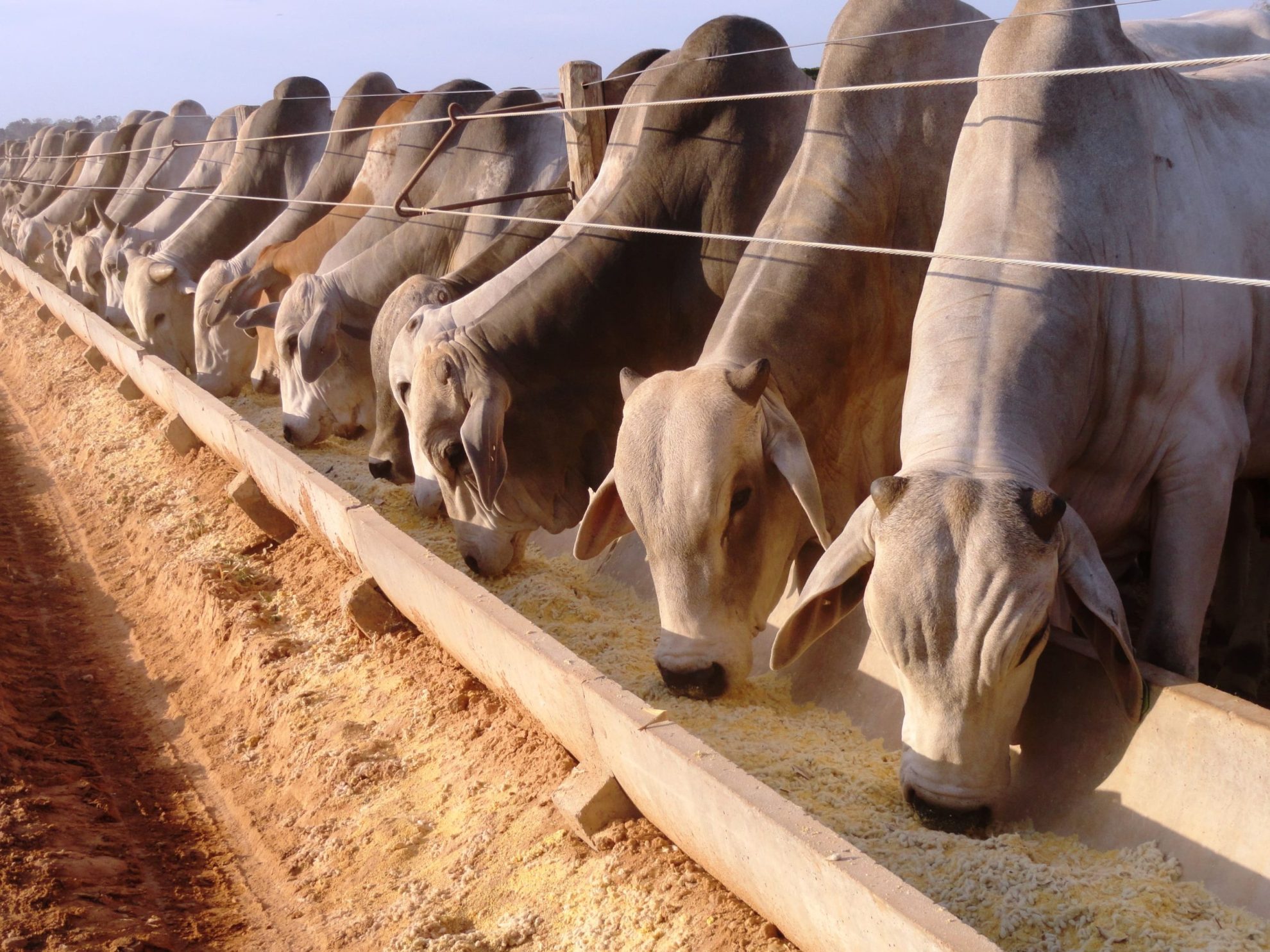NOVA CANAA DO NORTE, Brazil—Walking on a dusty field of cut rice that was once rainforest, researcher Flavio Wruck explains how farming, the Amazon’s biggest killer, can be turned into its best defender.
At the government-run experimental farm where he works, he points toward plots where crops, cattle and timber live together.
It’s a simple system, long practiced in the U.S., of rotating crops and revitalizing pasture instead of simply chopping down forest and planting new grasslands. But here in the state of Mato Grosso (“thick forest”), where ranchers and farmers have destroyed more of the Amazon than anywhere else, it’s a relatively new idea.
In the Amazon, the practice has been for ranchers to raze a patch of jungle, plant pasture and graze cattle on it for about 20 years until it’s exhausted, and then rip up a fresh patch of virgin forest.
It’s up to Wruck and others to convince farmers and ranchers that by diversifying and renewing the nutrients in soil, they can farm the same tract for several generations — and make more money.
“Our integration system rapidly increases the efficiency of crop and pasture land, allowing, for example, ranchers to graze as much as five times more cattle on the same piece of ground,” Wruck said during a recent visit to the 750-hectare (1,850-acre) Fazenda Gramada farm run by Brazil’s agricultural research agency Embrapa.
“That means we can break the cycle of ranchers needing to deforest to create more pasture.”
Brazilian officials and environmentalists agree that cattle ranching is the biggest cause of deforestation of the nation’s Amazon, an area the size of the U.S. west of the Mississippi River, about 20 percent of which has been destroyed.
The rainforest may be the world’s best defense against climate change because it absorbs the carbon dioxide blamed for global warming. But the gains are offset by burned or rotted vegetation that releases about 75 percent of Brazil’s carbon emissions.
Right now the government is claiming stepped-up policing has produced the biggest annual drop in deforestation since it started keeping records 20 years ago — 7,008 square kilometers (2,705 square miles) from August 2008 to July 2009. That was 46 percent less than the previous year.
But with only 1,400 agents overseeing about 5 million square kilometers (2 million square miles) of the Amazon, and most of those bunched in targeted areas, environmentalists have their doubts, saying the real reason is the global economic slowdown and the drop in demand for cattle, soy and timber.
The government aims to reduce deforestation by 80 percent within a decade, and the challenge for Wruck is to foster smarter farming.
Across Brazil some 60 million hectares (150 million acres) of pasture is considered degraded, supporting less than one head of cattle per hectare.
“We have the technology to make that five head per hectare quickly,” Wruck said.
But the slash-and-burn mentality among Brazilian farmers is hard to crack. Moreover, the drive for more ranching and farming land is higher than ever to feed Brazil’s rising demand for meat and China’s appetite for soy.
Complicating the problem, only about 5 percent of private land in the area is even titled. That makes it hard to prove who is responsible for illegally destroying the forest, leading to a culture of impunity and even more deforestation.
Wruck wants to change the thinking of Brazilians like 34-year-old Haullingtom Barbosa, who runs 1,300 head of cattle on 500 hectares (1,200 acres) at his ranch 2,170 kilometers (1,350 miles) from Rio de Janeiro.
Walking in his luminescent-green pasture, among blackened trunks of felled trees, Barbosa explains the ease of starting a ranch in the Amazon.
“We came here three years ago because we heard a good living could be made and that land was available,” he said. “We cleared the forest, threw out some grass seed and let it grow. We can feed cattle on this pasture for 20 years without doing anything.”
It’s a truth that Wruck and other agriculture scientists acknowledge: Temperate climate and ample rainfall mean just about anything can grow with little help.
And if Barbosa runs out of land? The rancher’s answer was simple: Raze more rainforest, at least up to the legal limit of 20 percent of his holdings.
“This land here just gives and gives,” he said.
Wruck said his role is to persuade ranchers that his system gives much more.
A typical plot on Wruck’s farm alternates rows of balsa or eucalyptus trees, a cash crop, with 30-meter (-yard) wide areas of pasture. Every five years, the pasture is replaced by a grain or cereal crop which replenish nutrients in the soil.
With hundreds of acres put to use this way, a rancher will have constantly rotating areas of grazing and crop lands, along with timber.
“Our methods will allow Brazil to grow much more and deforest much less,” Flavio said, standing next to a row of eucalyptus trees bordering soybeans. “It’s a simple way to increase revenue and halt deforestation at the same time.”
One convert is Mario Wolf Filho, a rancher, farmer and president of his farmers’ union in Nova Canaa do Norte, a town in the area.
“I’ve been able to triple my productivity in the same area without opening more forest,” he said. “It’s fantastic. I make economic gains and not at the expense of the environment. It’s Brazil’s way forward.”
Fonte: Boston.com


